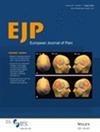High-impact chronic pain (HICP), defined as chronic pain with a significant impact on daily function, affects approximately 8% of the Western population. In Denmark, HICP still remains to be described at the population level. Some patients with HICP are referred to the Danish pain centres, where they are registered with a procedural code. We conducted a nationwide registry-based study of all Danish patients registered with a visit to a pain centre from January 2005 to March 2022, to explore time trends in the prescription of analgesics and sedatives in this HICP subpopulation. Furthermore, data on socioeconomics and hospital diagnoses are reported.
We used data from the Central Person Registry, the Danish National Patient Registry, the Danish National Prescription Registry, combined with data on socioeconomic information from Statistics Denmark. Data was collected on prescriptions 3 months before the first visit to a pain centre. Prescriptions were stratified into five calendar periods: before 2011, 2011–2013, 2014–2016, 2017–2019, and 2020–2022.
We identified 66,577 patients referred to a pain centre. Over 15 years, prescriptions before referral declined for opioids (from 53.2% to 31.7%), NSAIDs (from 28.3% to 23.5%), antidepressants (from 20.5% to 16.8%), anxiolytics (from 12.3% to 3.2%), and sleep medication (from 15.8% to 7.6%). In contrast, prescriptions increased for paracetamol (from 31.1% to 48.9%) and gabapentinoids (from 19.2% to 27.7%).
In patients with HICP visiting Danish pain centres, prescriptions before referral decreased for opioids over 15 years, with a simultaneously increased prescription of gabapentinoids (gabapentin and pregabalin).
This nationwide study of 66,577 Danish patients with high-impact chronic pain reveals a significant decrease in filled opioid prescriptions over the past 15 years, with a simultaneous rise in gabapentinoid use before referral to pain centres. These findings suggest a shift in clinical practice towards alternative pain management strategies. The study underscores the need for continued research into the long-term effects of these changes and their impact on patient outcomes.



